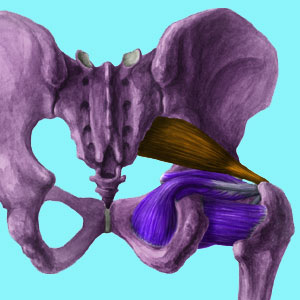
What is piriformis syndrome? This is a question we receive from many newly diagnosed patients who are desperate to find objective information regarding the condition. We understand how difficult it can be to navigate the treatment sector, when so much about the diagnosis remains mysterious. Where does piriformis syndrome come from? Why is it painful? How can I get rid of it? These are all typical follow-up questions regarding piriformis nerve compression syndromes.
This website is devoted to piriformis pain conditions. We cover no other topic. We want you to be able to advocate for yourself successfully and this requires knowledge of the condition. To this end, we provide all the information you will ever need to fully understand piriformis syndrome right here. All the lessons are free and we hope that they serve you as well as they have served millions of other people worldwide in their quests for piriformis pain relief.
This resource section addresses the most common questions about piriformis syndrome. We will provide answers that make scientific sense and provide expert guidance to assist patients in achieving the very best diagnostic and therapeutic results.
What is Piriformis Syndrome? / Answers
Piriformis syndrome is a nerve compression diagnosis that describes impingement of the sciatic (usually) and/or pudendal nerves (rarely) by a spasming piriformis muscle. It is well known that neurological tissue requires anatomical space in order to function correctly. When compressed, the nerve tissue suffers degradation of its ability to signal correctly or at all. This compression results in various symptoms including pain, paresthesia, weakness and potential dysfunction of motor abilities.
The sciatic nerve is the largest nerve in the body and is directly responsible for innervating the legs and feet. Therefore, symptoms of sciatic nerve compression are experienced in these locations, especially in the posterior and outer side of the upper leg in most patients. Meanwhile, the pudendal nerve innervates areas of the groin, pelvis and perineum region, explaining why symptoms of this type of compression will affect these anatomical tissues.
What is Piriformis Pain? / Discussions
Below, we provide detailed information on various aspects of the piriformis syndrome process. By understanding each component of the condition and the anatomical parts involved, you will come to appreciate the full scope of the painful complaint in a way that makes perfect sense from an enlightened scientific POV. As each new essay is finished, it will be shared below:
The piriformis muscle is the source of nerve compression, but does not experience pain itself. This is a fact that confuses many patients who visualize the location of the muscle in pictures, but experience pain elsewhere. When patients ask, “What is the piriformis muscle?” we can provide an answer that will help to put them on the right path towards successful treatment.
The sciatic nerve is the most frequent victim of piriformis muscle compression, enacting symptoms virtually anywhere in the lower limbs.
We provide a sensible and easily understood piriformis syndrome definition that accounts for all possible causes and symptomatic expressions.
Piriformis syndrome facts should never be confused with myths or medical marketing ploys. Facts are indisputable and are therefore few and far between.
Looking for a piriformis pain explanation that is actually logical and verified? We can help by detailing how and why nerve tissues can suffer compression via the piriformis muscle.
When evaluating sources of piriformis information, be certain to account for the motivation of the source. Are you being marketed to? If so, be wary of the objectivity of said information.
Piriformis research is ongoing and continually updates our understanding of piriformis syndrome from a medical perspective. Learn about the latest research findings. Piriformis syndrome news is not a major medical topic, but plenty of studies are released each year that enrich our comprehension of the condition.
We provide some great piriformis pain advice that is universally applicable, regardless of your diagnosis, the duration of your pain or the consequences it produces.
Is piriformis pain a cause or an effect? This is a very important question, since some piriformis nerve compression syndromes are the origins of pain, while others are simply results of some other underlying process.
What causes piriformis syndrome? This question deserves special attention, since there are several possible causes and each demonstrates telltale signs of its true origin.
Our piriformis FAQ section provides specific answers for the most frequently asked questions about piriformis pain.
You can read more information about piriformis syndrome on Cure-Back-Pain.Org and learn from the unique the proprietary research conducted on the subject of chronic piriformis pain.
What is Piriformis Syndrome? Summary
We hope that this section has answered your questions regarding the piriformis syndrome diagnosis. If you still have a question, feel free to contact us on any of our social media outlets or speak to your doctor for personalized advice that is relevant to your specific health issues.
Additionally, please remember that we provide a site search function that works for all of our web properties. Since we discuss piriformis pain throughout our Cure Back Pain Network of sites, you might want to utilize this feature to enjoy compete coverage of the topic from multiple perspectives.
Piriformis Pain > What is Piriformis Syndrome?





